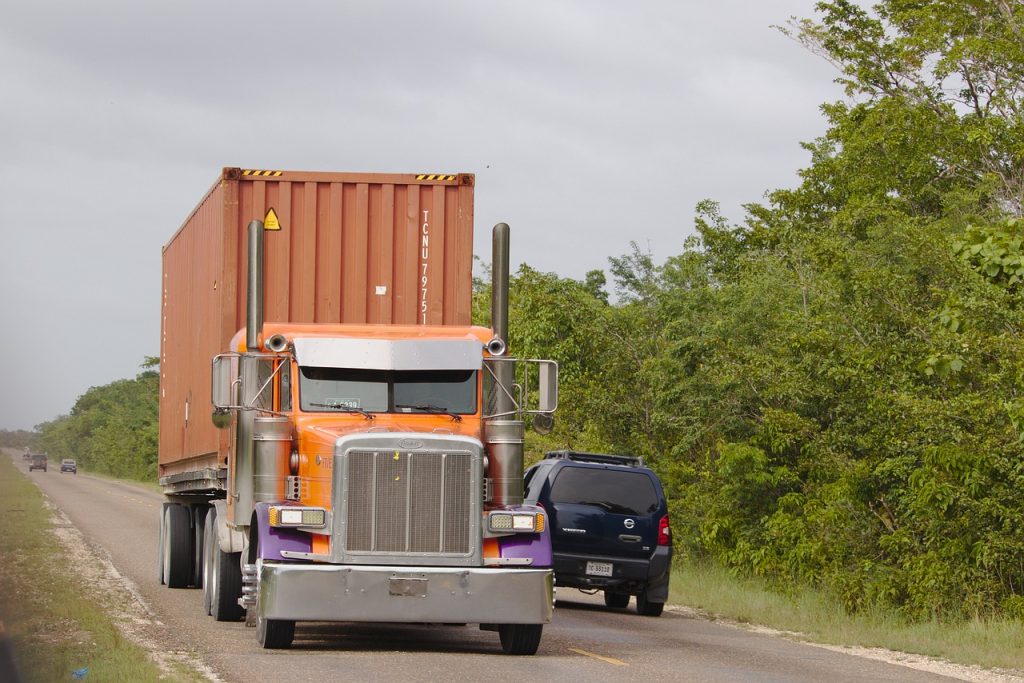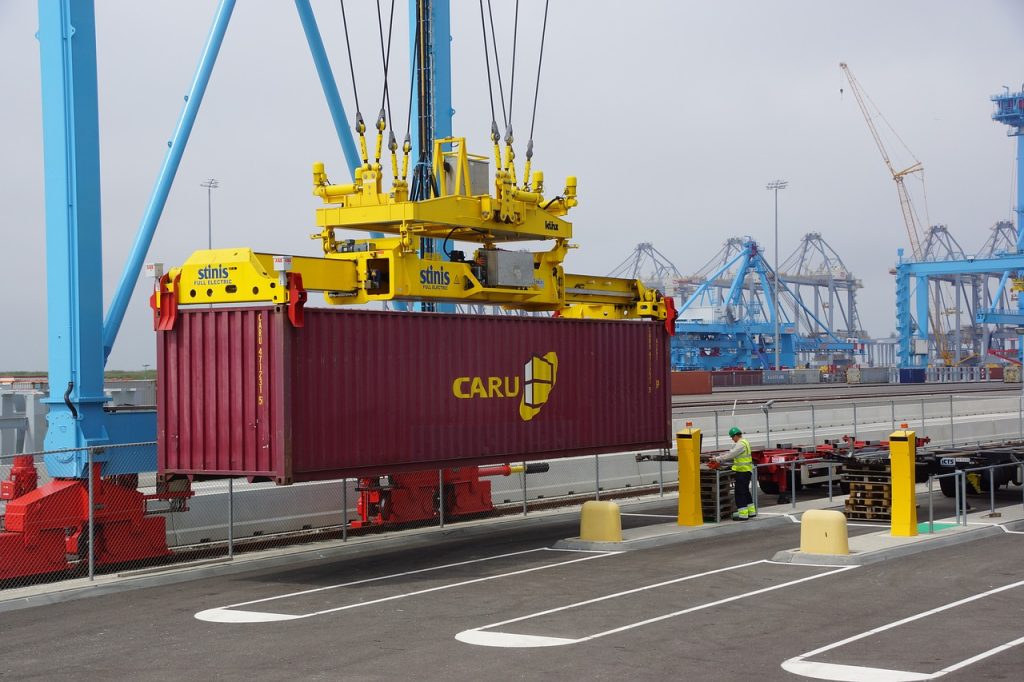How To Move a Shipping Container? Find Out 3 Efficient Ways
Freedom Heavy Haul can offer expedited Pickup and Delivery for any size shipment anywhere in the USA. Contact us today for No Hassle, No Pressure Pricing.
Relocating a shipping container, whether for industrial, commercial, or residential purposes, is a task that demands thorough planning and the right choice of transportation methods. This process involves understanding the specific requirements of the container, including its dimensions, weight, and contents, as well as considering the logistics and costs associated with different transportation methods. In this article, you will learn about how to move a shipping container.
How To Move a Shipping Container
The transportation of shipping containers includes a variety of methods, each suitable for different scenarios based on distance, budget, and logistical requirements. From overland transport like trucks and trains to maritime options, the choice depends on the specifics of the move.
Essentials of Container Transportation
Effective container transportation hinges on a deep understanding of several critical factors. These include the container’s dimensions and weight, the nature of its contents, and the logistics involved in the move. Proper planning and adherence to these factors ensure that the transportation is safe, efficient, and compliant with all relevant regulations and infrastructure requirements.
Methods for Moving Containers Over Land
Overland transportation offers flexibility and accessibility, making it a popular choice. This includes using trucks for direct delivery to specific locations and trains for longer, cost-effective journeys. Each method comes with its own set of advantages and challenges, such as speed, cost, and suitability for different distances and terrains.
Maritime Options for Container Movement
For international or significantly long-distance moves, sea transport is often the most practical option. It can accommodate large volumes and heavy weights, although it generally requires more time for planning and coordination, especially in dealing with port authorities and aligning with shipping schedules.
Transporting Shipping Containers by Truck
Trucking is a common method for moving containers, particularly effective for shorter distances or when a container needs to be delivered directly to a specific location.

Utilizing a Tilt Bed Truck for Container Movement
Tilt bed trucks are particularly useful for transporting smaller containers. Their ability to tilt the bed facilitates the sliding off of the container at the destination, which is especially handy when additional lifting equipment is not available on-site.
Employing Flatbed Trucks for Container Transport
Flatbed trucks are versatile and can accommodate various sizes of containers. They typically require external equipment, such as cranes or forklifts, for the loading and unloading processes, making them suitable for sites that are equipped with such machinery.
Advantages of Step-Deck Trucks in Container Shipping
Step-deck trucks, characterized by their lower and upper decks, are ideal for transporting taller containers. They enable easier loading and unloading processes and are particularly adept at navigating under bridges and through overpasses.
Techniques for Unloading Containers from Flatbed and Step-Deck Trucks
The unloading of containers from flatbed and step-deck trucks demands careful planning and coordination. This includes ensuring the availability of the right equipment and implementing stringent safety measures, particularly in areas where space is limited or the terrain is uneven.
Moving Shipping Containers by Rail
For long-distance container transportation, rail offers an efficient and eco-friendly option. It’s particularly cost-effective for large volumes of containers and has a lower carbon footprint compared to road transport.
Understanding Rail Transport for Containers
Utilizing rail transport for containers involves detailed coordination with rail companies. It’s crucial to understand the limitations related to container sizes and the specific routes available. Rail transport is often combined with truck transport for the final leg of the journey to ensure door-to-door delivery.
Benefits and Limitations of Container Transport by Train
Rail transport offers significant benefits, such as reduced road traffic congestion and lower transportation costs over long distances. However, it also has its limitations, including less flexible schedules and the need for additional transport arrangements to and from rail terminals.
Alternative Methods for Shipping Container Movement
In addition to traditional truck and train methods, there are other options available for specific needs or circumstances, such as sea or air transport.
Shipping Containers by Sea: Methods and Considerations
Sea transport is essential for international shipping of containers. It requires extensive planning around port operations, customs procedures, and aligning with ship schedules. While it is an effective method for transporting large volumes, it also requires the longest lead times and careful coordination.
Air Freight Options for Shipping Containers
Air freight, though significantly more expensive, is the quickest method for transporting containers. It is typically reserved for high-value or time-sensitive goods and is used when other transportation methods are not feasible due to time constraints or geographical limitations.
Logistics and Preparation for Container Transport
The successful transport of a shipping container relies heavily on detailed logistics and thorough preparation. This includes understanding the container’s specifications and ensuring that both the loading and unloading sites are adequately prepared for the arrival and departure of the container.

Calculating the Weight of Your Shipping Container
Knowing the exact weight of your shipping container is crucial. This information is essential for selecting the appropriate transportation method and for compliance with legal weight limits. Overloading not only poses safety risks but can also lead to legal issues.
Using Heavy Machinery for Local Moves or Loading
For short distances or on-site movements, heavy machinery such as forklifts or cranes may be required. These operations need skilled operators and strict adherence to safety protocols to ensure that the move is conducted safely and efficiently.
Strategies for Property-to-Property Container Transport
When moving a container from one property to another, especially in residential areas, careful planning is necessary. This includes considerations for local road access, entry points to the property, and any potential obstacles that might be encountered during the transport.
Professional Shipping Container Moving Services
For those seeking a hassle-free approach, professional moving services offer comprehensive solutions that cover all aspects of container transport.
Exploring Container Moving Services: Benefits and Considerations
Professional moving services provide the convenience of handling all logistics, from securing the necessary permits to managing the actual transportation. However, these services come at a higher cost. When selecting a provider, it’s important to consider their experience, range of services, and customer reviews.
How to Choose the Right Service for Your Container Move
Choosing the right moving service requires careful research and consideration. Factors to consider include the provider’s experience in handling similar moves, their reputation in the market, and the balance between the services offered and the associated costs.
Cost Analysis of Moving a Shipping Container
The cost of moving a shipping container can vary significantly based on several factors, including the method of transportation, the distance of the move, and any additional services that may be required.

Understanding the Costs of Truck Transport for Containers
The cost of transporting a container by truck is influenced by factors such as the distance of the move, the size and weight of the container, and the specific route taken. Additional costs may also arise from the need for special permits, escort vehicles, and the use of lifting equipment.
Comparative Cost Analysis: Rail vs. Truck vs. Sea Transport
Comparing the costs of different transportation methods requires a holistic view that goes beyond just the direct costs. Factors such as the time taken for the transport, the level of convenience offered, and the accessibility of the destination all play a role in determining the most cost-effective method.
Tips for Reducing Costs in Container Transportation
To minimize the costs associated with transporting a shipping container, it’s important to choose the most efficient transportation method for your specific needs, consider consolidating shipments where possible, and plan well in advance to avoid rush fees and other last-minute expenses.







